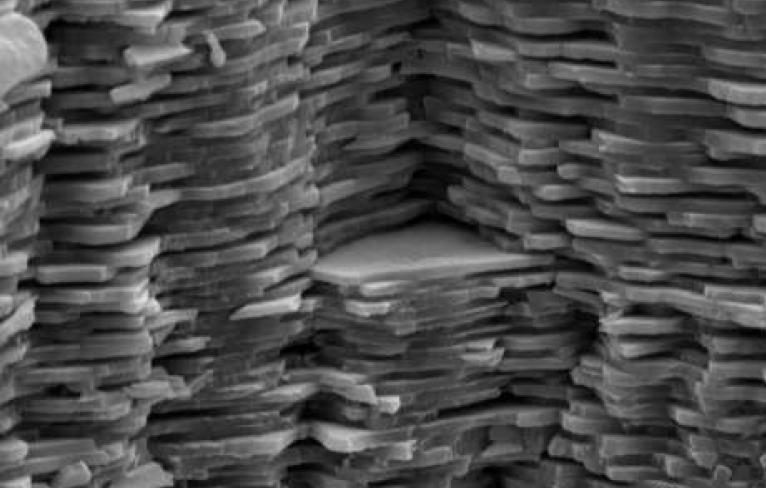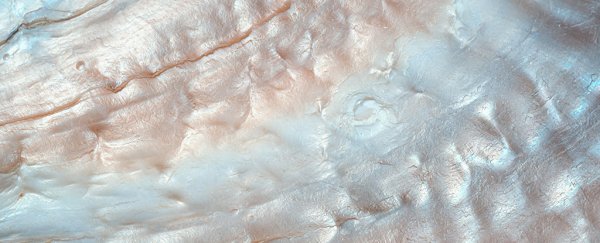Few composite materials forged by nature are as tough as mother-of-pearl, or nacre. Now, scientists have finally figured out just how the minuscule layers of this pearlescent substance make it so strong.
You'll find nacre on the outer coatings of pearls and on the inside of some mollusc shells, but until now scientists didn't really understand how it works at the nanoscale, as this coating is highly resistant to stress and strain.
The secret to nacre's toughness is in the way the material's tiled surface locks together when stress is put on it, enabling it to spread out the strain. When the surface is no longer under pressure, it relaxes into individual tiles again.
That could in turn help us to develop super-strong materials of our own, taking inspiration from the best materials nature has to offer.
"It's incredible that a mollusc, which is not the most intelligent creature, is fabricating so many structures across so many scales," says materials scientist Robert Hovden from the University of Michigan.
"It's fabricating individual molecules of calcium carbonate, arranging them into nano-layered sheets that are glued together with organic material, all the way up to the structure of the shell, which combines nacre with several other materials."
In previous work, scientists had already identified the 'brick-and-mortar' structure of nacre – nano-sized tablets of aragonite glued together with organic material, looking just like a brick wall if you get up close enough.
 The structure revealed by a scanning electron microscope. (Fabian Heinemann/Public Domain)
The structure revealed by a scanning electron microscope. (Fabian Heinemann/Public Domain)
What this new research shows is that reaction under pressure, obtained through electron microscope observations. The 'mortar' squishes aside under pressure, then returns when the pressure is relieved.
Surprisingly, and unusually, nacre doesn't lose any of its resistance through this process. Tests showed that its resilience levels didn't drop, even under repeated impacts of up to 80 percent of its yield strength.
Should the surface develop a crack, nacre is able to isolate the nano-tablet where the crack occurs, so it doesn't affect the rest of the surface.
In the press statement, the researchers deem nacre to be "nature's toughest material". Of course, that really depends on how you want to go about measuring said 'toughness'; for example, on the Mohs scale of hardness, pearl gets the fairly humble rating of roughly 2.5, but that just means it can be easily scratched with any harder mineral.
If we talk about a material's strength, there are other aspects – how much weight a material can carry, how much pressure it can withstand, and so on – from limpet teeth to spider silk, there are other naturally occurring materials that are immensely strong; nacre can sustain really impressive mechanical impacts, hence it earns its reputation for toughness.
Now the scientists behind the study want to use their findings to develop stronger human-made materials – not calculated through computer simulations or algorithms, but inspired by millions of years of natural evolution.
"We humans can make tougher materials using unnatural environments, for example extreme heat and pressure," says Hovden. "But we can't replicate the kind of nano-engineering that molluscs have achieved."
"Combining the two approaches could lead to a spectacular new generation of materials, and this paper is a step in that direction."
The research has been published in Nature Communications.
